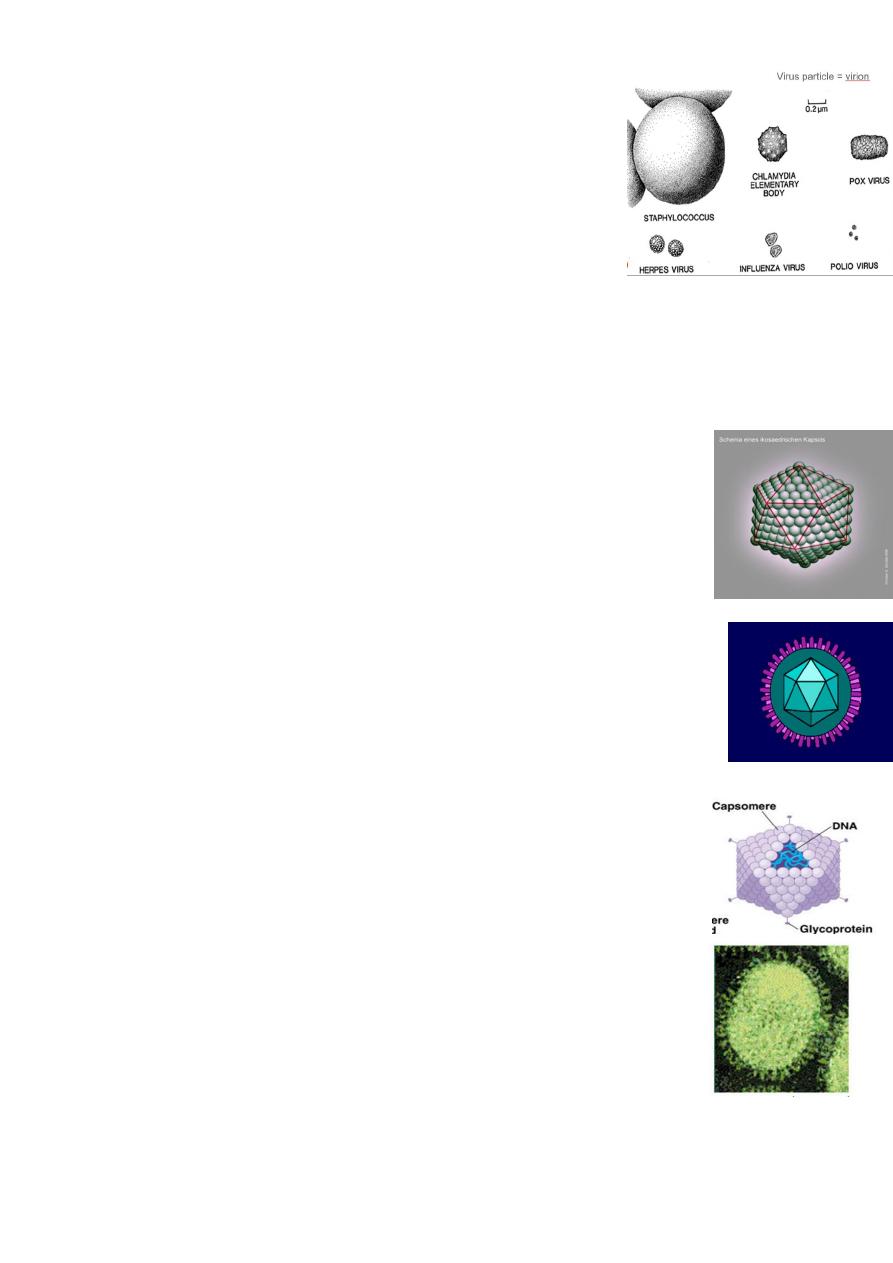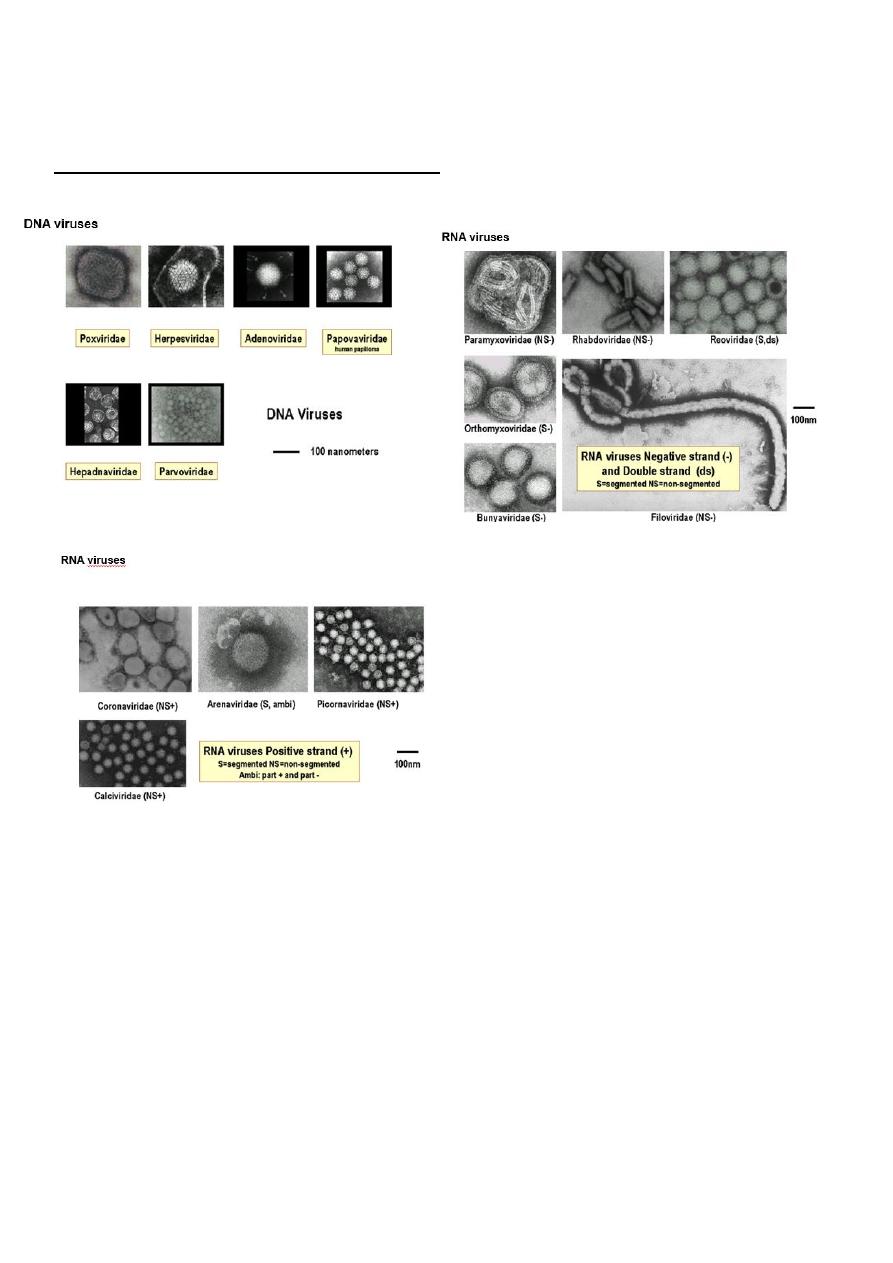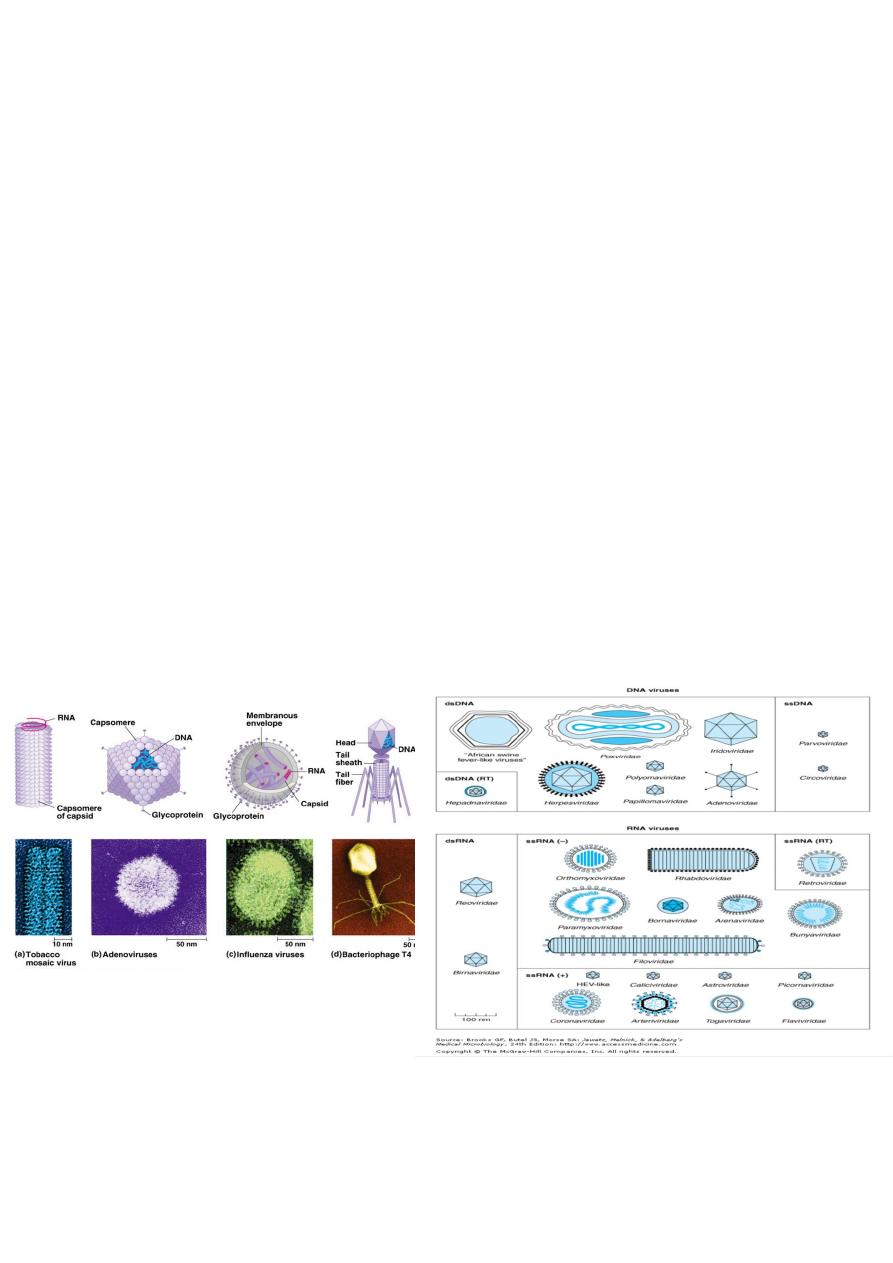
Microbiology virology.1 dr. Mohammed
General Virology
Structure and classification
Objectives:
To understanding of : General properties of viruses and the define structure of viruses.
Also, its going through a general classification of viruses depending on different rules. In addition, evolutionary
Origin of Viruses and Universal System of Virus Taxonomy are included within objectives.
Assessment: Homework, quizzes, examination, poster and mini-research discussion.
References: Main textbook: Medical Microbiology, Jawetz, Melnick 26th ed.,2013
Medical virology
Is the science that deals with the study of medically important viruses infected all forms of life (human, animal ,
plant), bacteria and fungi.
Viruses: are the smallest infectious agents (20-300nm) in size, composed of nucleic acid
surrounding by protein shell which is in some type of viruses surrounding by lipid envelope.
Viruses are small, sub cellular that are unable to multiply outside a living host cell.
Containing only one kind of nucleic acid (DNA or RNA) as their genome
Nucleic acid is enclosed in a protective protein shell which may be surrounded by lipid containing membrane
Viruses replicate only in living cells.
Viruses differ from other microorganisms in their structure ,biology and way of replication

WHAT ARE VIRUSES?
They are inert in the extracellular environment. Viruses do not posses all
the enzyme systems necessary for the synthesis of new viral materials ,
therefore they are dependent on the parasitized cell for survival and
multiplication.
They are parasite at genetic level.
Viral nucleic acid containing information causing programming the infected
host cell to synthesize number of virus specific macromolecule for the
production of virus progeny.
The coat protein assemble together to form a capsid which stabilize the virus against the extracellular
environment (such as nucleases) and facilitate attachment and perform penetration of the virus to the
susceptible host cell.
The virus is obligatory intracellular microorganism , so the virus does not live outside the cell.
VIRAL STRUCTURE – SOME TERMINOLOGY
Capsid:is the outer protein shell, or coat that encloses the nucleic acid genome.
The capsid has specific receptors that are responsible for binding to specific type of cells and
it is composed of specific number of identical subunits called Capsomeres
Capsomeres: Morphologic units seen in the electron microscope on the surface of icosahedral
virus particles. Capsomeres represent clusters of polypeptides.
Defective virus: A virus particle that is functionally deficient in some aspect of replication.
Envelope: A lipid-containing membrane that surrounds some virus particles. It is acquired during
viral maturation by a budding process through a cellular membrane.
Nucleocapsid: The protein-nucleic acid complex representing the packaged form of the viral
genome.
Virion: The complete virus particle. In some instances (eg, papilloma viruses, picorna viruses), the
virion is identical with the nucleocapsid.
Types of symmetry of virus particles
Icosahedral symmetry (cubic(: composed of 12 vertices and 20 equal triangular
sides ,with approximate outline of sphere ,e.g Herpes virus and Adenovirus.
Helical symmetry :the capsomeres are arranged like steps in a spiral strain case or
hollow ,rod shaped ,the helix rigid or flexible ,e.g influenza and parainfluenza
viruses.

Complex viruses :e.g Poxvirus ,in which there are many layers around the capsid.
Basis of Classification
The following properties have been used as a basis for the classification of viruses: A- Based
on chemical and physical criteria :
(1) Virion morphology, including size, shape, type of symmetry, and presence or absence of membranes.
(2) Virus genome properties, including:
Type of nucleic acid (DNA or RNA).
Size of genome in kilobases (kb) or kilobase pairs (kbp).
strandedness (single or double).
Whether linear or circular
Segments (number, size).
Nucleotide sequence.
G + C content.
Positive or Negative Sense (Polarity (.
In some RNA viruses they are positive polarity and in other are negative polarity.............
1- Positive polarity means that the RNA sequence is as the same as the sequence of mRNA ,so do not need
transcription.
2- Negative polarity means that the base sequence is different from the sequence of mRNA.
(3) Physicochemical properties of the virion, including:
Molecular mass,
pH stability,
Thermal stability,
Susceptibility to physical and chemical agents, especially ether and detergents.
(4) Virus protein properties, including: number, size, and functional activities of structural and nonstructural
proteins, amino acid sequence, modifications (glycosylation, phosphorylation), and special functional activities
(transcriptase, reverse transcriptas ,neuraminidase and fusion activity(.
(5) Genome organization and replication, including:
gene order,
Strategy of replication (patterns of transcription, translation).
Cellular sites (accumulation of proteins, virion assembly, virion release).
(6) Antigenic properties.
(7) Biologic properties, including:
Natural host range.
Mode of transmission.

Vector relationships.
Pathogenicity.
Tissue tropisms and pathology.
B- Classification of viruses based on nucleic acid genome
C- Classification according to diseases they produce:
Generalized diseases: in which virus is spread throughout the body via blood stream and in which multiple
organs are affected, Skin rashes may occur, these include Measles, rubella, chicken pox, yellow fever and
Enteroviruses.
Diseases primarily affected specific organs:
a- Diseases of CNS, such as poliomyelitis, rabies, aseptic meningitis and herpes simplex.
b- Diseases of liver, such as hepatitis type A,B,C,D,E ,yellow fever and rubella virus.
d- Diseases of skin or mucous membranes, such as herpes simplex, molluscum contagiosum, warts and herpes
zoster.
e- Diseases of Eye, such asadenovirus, herpes keratoconjunctivitis and epidemic haemorragic conjunctivitis.

f- Diseases of the gastrointestinal tract, such as rotavirus and enteric adenviruses.
g- Sexually transmitted diseases, such as herpes, hepatitis B virus, papilloma viruses, retroviruses (HIV) and
cytomegalovirus.
Evolutionary Origin of Viruses
Two theories of viral origin can be summarized as the following
(1) Viruses derived from DNA or RNA nucleic acid of host cells that became able to replicate autonomously and
evolve independently (some viral sequences are related to cellular genes encoding protein functional domains.
(2) Viruses degenerate forms of intracellular parasites. There is no evidence that viruses evolved from bacteria,
though other obligately intracellular organisms, eg, rickettsiae and chlamydiae, presumably did so.
(However, poxviruses are so large and complex that they might represent evolutionary products of some cellular
ancestor)
Universal System of Virus Taxonomy
A system has been established in which viruses are separated into major groupings called families on the basis of
virion morphology, genome structure, and strategies of replication.
Virus family names have the suffix –(viridae). And each family is divided to subfamily (virinae) within each subfamily,
subdivisions called genera are usually based on physicochemical or serologic differences. Criteria used to define
genera vary from family to family. Genus names carry the suffix (virus).
By 2000, the International Committee on Taxonomy of Viruses had organized more than 4000 animal and plant
viruses into 56 families, 9 subfamilies, and 233 genera, 24 families contain viruses that infect humans and animals.



